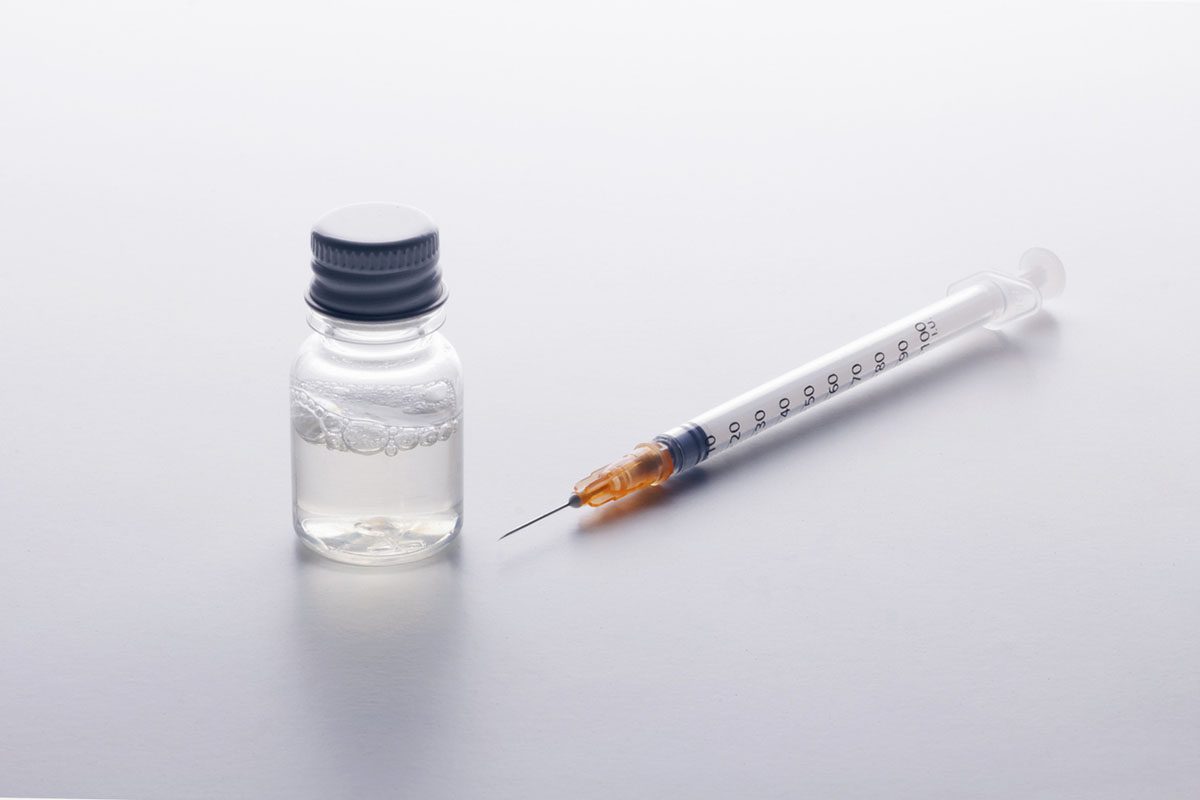Because this piece does not have an abstract, we have provided for your benefit the first 3 sentences of the full text.
To the Editor: Studies carried out recently in the United States reported increased rates of opioid overdoses and deaths. Opioid substitution therapy (OST) has been shown to be an effective treatment for opioid dependence and can reduce mortality. However, public policy and regulatory barriers in many countries still impede access to treatment.
This work may not be copied, distributed, displayed, published, reproduced, transmitted, modified, posted, sold, licensed, or used for commercial purposes. By downloading this file, you are agreeing to the publisher’s Terms & Conditions.
Pregabalin Use Among Opioid-Addicted Patients in Switzerland
To the Editor: Studies carried out recently in the United States reported increased rates of opioid overdoses and deaths.1 Opioid substitution therapy (OST) has been shown to be an effective treatment for opioid dependence and can reduce mortality.2 However, public policy and regulatory barriers in many countries still impede access to treatment.1,3
In addition to an increased incidence of deaths due to opioid overdose, a recent postmortem study4 of drug users found blood pregabalin concentrations at lethal poisoning levels in 19.1% of cases (n = 316), 91.4% of whom showed concomitant opioid use. This finding accords with previous reports of pregabalin abuse among patients in OST,5,6 with a recent German study reporting that 15 of 124 patients (12.1%) in OST tested positive for urinary pregabalin.5 One explanation for the increase in pregabalin abuse, particularly among patients in OST, might be related to attempts by heroin addicts to alleviate symptoms of opiate withdrawal syndrome.7 Pregabalin is a structural analog of γ-aminobutyric acid (GABA) with an excellent safety and efficacy record in the treatment of generalized anxiety disorder, epilepsy, and neuropathic pain8; it binds to the α2δ subunit of voltage-dependent calcium channels. Although pregabalin may not bind directly to GABA receptors, it has GABAergic properties and is approved for the treatment of anxiety disorders, neuropathic pain, and partial-onset seizures. Furthermore, pregabalin might have a potential for abuse based on its GABA analog effects. In premarketing studies,9 euphoria was noted as an adverse effect of pregabalin use, and pregabalin may have a booster effect when used together with opioids, although this last feature remains unconfirmed because patients with substance use disorders are usually excluded from randomized controlled trials.
Given recent reports of frequent pregabalin use by patients in OST5 and its involvement in a series of lethal drug overdoses in combination with opioids,6 we chose a naturalistic approach to study pregabalin abuse in OST patients. Using self-report questionnaires and cross-sectional screening of pregabalin in hair specimens, we analyzed data from 109 patients (29 female, 80 male), with a mean ± SD age of 41.3 ± 8.7 years and participating in OST (70 using methadone; 20, morphine; and 19, buprenorphine). The study was conducted in an outpatient department of the Psychiatric Hospital of Zurich. The inclusion criterion for participation in the study was a diagnosis of opioid dependence according to DSM-IV. The exclusion criteria were being < 18 or > 65 years of age, having insufficient language skills, and having a regular prescription of pregabalin. Subjects were invited to participate in the study (to a final study population of n > 100) when they came to collect opioid medication (a majority agreed to take part). All participants provided written informed consent and were compensated for their participation. The study was approved by the local ethics committee of the canton of Zurich.
We collected self-report measures and compared these with hair assays to verify self-reports. Demographic data, medication, and self-reported drug and medication use were assessed. Pregabalin use was quantified using 3-month hair toxicology analysis. (A Shimadzu Prominence high performance liquid chromatography system [Shimadzu, Duisburg, Germany] and a Sciex QTrap 5500 mass spectrometer [Sciex, Darmstadt, Germany] were used for the analysis.) Results of the 3-month hair toxicology analyses were concordant with pregabalin self-reporting in 100% of cases (n = 109)—none of the participants reported pregabalin use and pregabalin was undetectable in all samples. These findings contrast sharply with reports of pregabalin misuse by opioid-dependent patients in other countries. Possible explanations for lower rates of pregabalin abuse in Switzerland include (a) easy accessibility to substance abuse treatment for individuals with an opiate use disorder (most users are estimated to be in treatment)10,11 and (b) taking a course of other drugs or medications does not usually lead to users’ exclusion from treatment.
In Switzerland, the prescription rates of pregabalin have recently increased and are now comparable to rates in other countries. However, our patients in OST did not report use of pregabalin, and we verified this by 3-month hair analysis. Certain study limitations should be noted. The screening was conducted in 1 center only and included a small number of participants. Generalizability of our findings requires confirmation in other samples. Nevertheless, in light of the current lack of data garnered from naturalistic settings and the risks associated with pregabalin abuse in OST, we would argue that systematic research on this topic is urgently needed. Furthermore, on the basis of our results, we would also contend that medication-assisted therapies for opioid-dependent patients2 in treatment settings should be made more readily available and with as few restrictions as possible in order to avoid an uncontrolled interaction of additional substances with potentially fatal outcomes. We also recommend caution regarding pregabalin use when treating patients with a history of opioid dependence.
References
1. Volkow ND, Frieden TR, Hyde PS, et al. Medication-assisted therapies—tackling the opioid-overdose epidemic. N Engl J Med. 2014;370(22):2063-2066. PubMed doi:10.1056/NEJMp1402780
2. Soyka M, Mutschler J. Treatment-refractory substance use disorder: Focus on alcohol, opioids, and cocaine. Prog Neuropsychopharmacol Biol Psychiatry. 2015 Nov 12 [Epub ahead of print]. PubMed doi:10.1016/j.pnpbp.2015.11.003
3. Sigmon SC. Access to treatment for opioid dependence in rural America: challenges and future directions. JAMA Psychiatry. 2014;71(4):359-360. PubMed doi:10.1001/jamapsychiatry.2013.4450
4. Hפkkinen M, Vuori E, Kalso E, et al. Profiles of pregabalin and gabapentin abuse by postmortem toxicology. Forensic Sci Int. 2014;241:1-6. PubMed doi:10.1016/j.forsciint.2014.04.028
5. Grosshans M, Lemenager T, Vollmert C, et al. Pregabalin abuse among opiate addicted patients. Eur J Clin Pharmacol. 2013;69(12):2021-2025. PubMed doi:10.1007/s00228-013-1578-5
6. Grosshans M, Mutschler J, Hermann D, et al. Pregabalin abuse, dependence, and withdrawal: a case report. Am J Psychiatry. 2010;167(7):869. PubMed doi:10.1176/appi.ajp.2010.09091269
7. Kפmmerer N, Lemenager T, Grosshans M, et al. Pregabalin for the reduction of opiate withdrawal symptoms. Psychiatr Prax. 2012;39(7):351-352. PubMed
8. Huckle R. Pregabalin (Pfizer). Curr Opin Investig Drugs. 2004;5(1):82-89. PubMed
9. Schjerning O, Rosenzweig M, Potteg×¥rd A, et al. Abuse potential of pregabalin: a systematic review. CNS Drugs. 2016;30(1):9-25. PubMed doi:10.1007/s40263-015-0303-6
10. Nordt C, Stohler R. Incidence of heroin use in Zurich, Switzerland: a treatment case register analysis. Lancet. 2006;367(9525):1830-1834. PubMed doi:10.1016/S0140-6736(06)68804-1
11. Nordt C, Vogel M, Dürsteler KM, et al. A comprehensive model of treatment participation in chronic disease allowed prediction of opioid substitution treatment participation in Zurich, 1992-2012. J Clin Epidemiol. 2015;68(11):1346-1354. PubMed doi:10.1016/j.jclinepi.2015.05.002
aCenter for Addictive Disorders, Department of Psychiatry, Psychotherapy and Psychosomatics, Psychiatric Hospital, University of Zurich, Zürich, Switzerland
bPrivatklinik Meiringen, Meiringen, Switzerland
cZurich Institute of Forensic Medicine, Center for Forensic Hair Analysis, University of Zurich, Switzerland
dDepartment of Addictive Behavior and Addiction Medicine, Central Institute of Mental Health, Mannheim, University of Heidelberg/Medical Faculty Mannheim, Germany
eExperimental and Clinical Pharmacopsychology, Department of Psychiatry, Psychotherapy and Psychosomatics, Psychiatric Hospital, University of Zurich, Switzerland
Potential conflicts of interest: Dr Mutschler has received travel expenses and speaker fees from Lundbeck and Takeda. Dr Herdener received compensation for consultancy and a speaker’s fee from Lundbeck. All other authors report no conflicts relative to this letter.
Funding/support: None.
J Clin Psychiatry 2016;77(9):1202-1203
dx.doi.org/10.4088/JCP.15l10296
© Copyright 2016 Physicians Postgraduate Press, Inc.
This PDF is free for all visitors!





